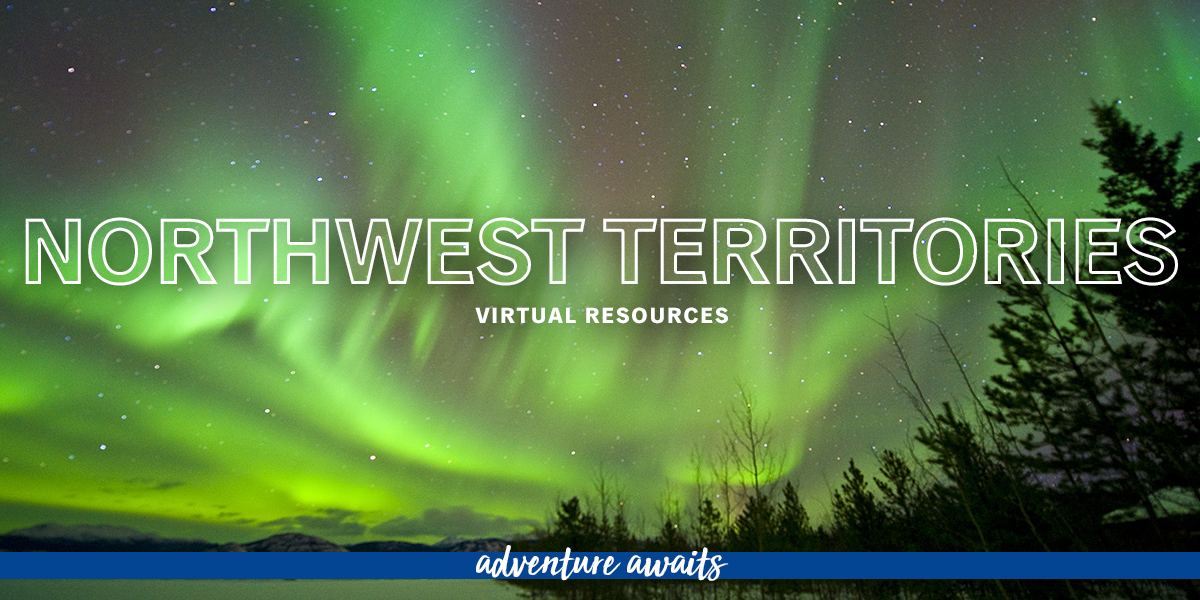Learn the province
The coat of arms for the Northwest Territories consists of a shield and a crest. The upper portion of the shield represents the ice fields of the far north and the Northwest passage. The green and red areas of the shield stand for the forests of the Mackenzie River Valley and the tundra of the Canadian Shield area. The wavy division between the green and red area represents the northern tree line. The importance of the fur trade is represented by the head of the fox and the yellow billets refer to the mining of gold in the region. The crest above the shield is a compass in between two Narwhals.
The Northwest Territories provincial flag consists of vertical blue-white-blue stripes and the shield of the territorial coat of arms on its wide central white stripe.
Study some history
Long before Europeans arrived, the Innuit and First Nations peoples inhabited the land–and still do to this day. Europeans visited the region for fur trading, which was a booming business in the 16th century. In 1670, the Hudson’s Bay Company was formed by a royal charter, granting the Europeans a commercial monopoly over the Northwest Territories which lasted until 1870. At that point, the Hudson’s Bay Company transferred the Northwest Territories over to the British Crown, who then transferred them to Canada.
Get creative
Organize your art supplies and get painting! Pick a location you’ll visit on your trip and compare your artwork to photos of the location when you return. Consider painting Yellowknife (the capital of the Northwest Territories) or Great Slave Lake.
Pick a film
Watch a movie or TV show that was filmed in (or relates to) your destination. Some ideas for the Northwest Territories include:
- The Lesser Blessed (2012)
- Three Feathers: The Movie (2018)
- Cry of the Wild (1972)
Understand the culture
Arts and crafts are an important part of most Northwest Territories cultures. You can experience these at Inuvik’s Great Northern Arts Festival, the largest of the many summer arts festivals held throughout the Northwest Territories. Music is equally important in the region, from the sacred prayer songs following Dene tea dances to the raucous fiddling imported from Scotland, Ireland, and other parts of Canada.
Examine the economy
Mining is the largest industrial sector of the Northwest Territories economy. Oil and gas exploration and development are also important, as are fishing, hunting, and trapping. If you were to move to the Northwest Territories, what job would you choose and why?
Master the language
The Northwest Territories is the only political region in Canada which recognizes 11 official languages. Of these, nine are indigenous languages that belong to three different language families: Dene, Inuit, and Cree.
Did you know?
Yellowknife is called the “Diamond Capital of North America” because there are three operating diamond mines close by.

